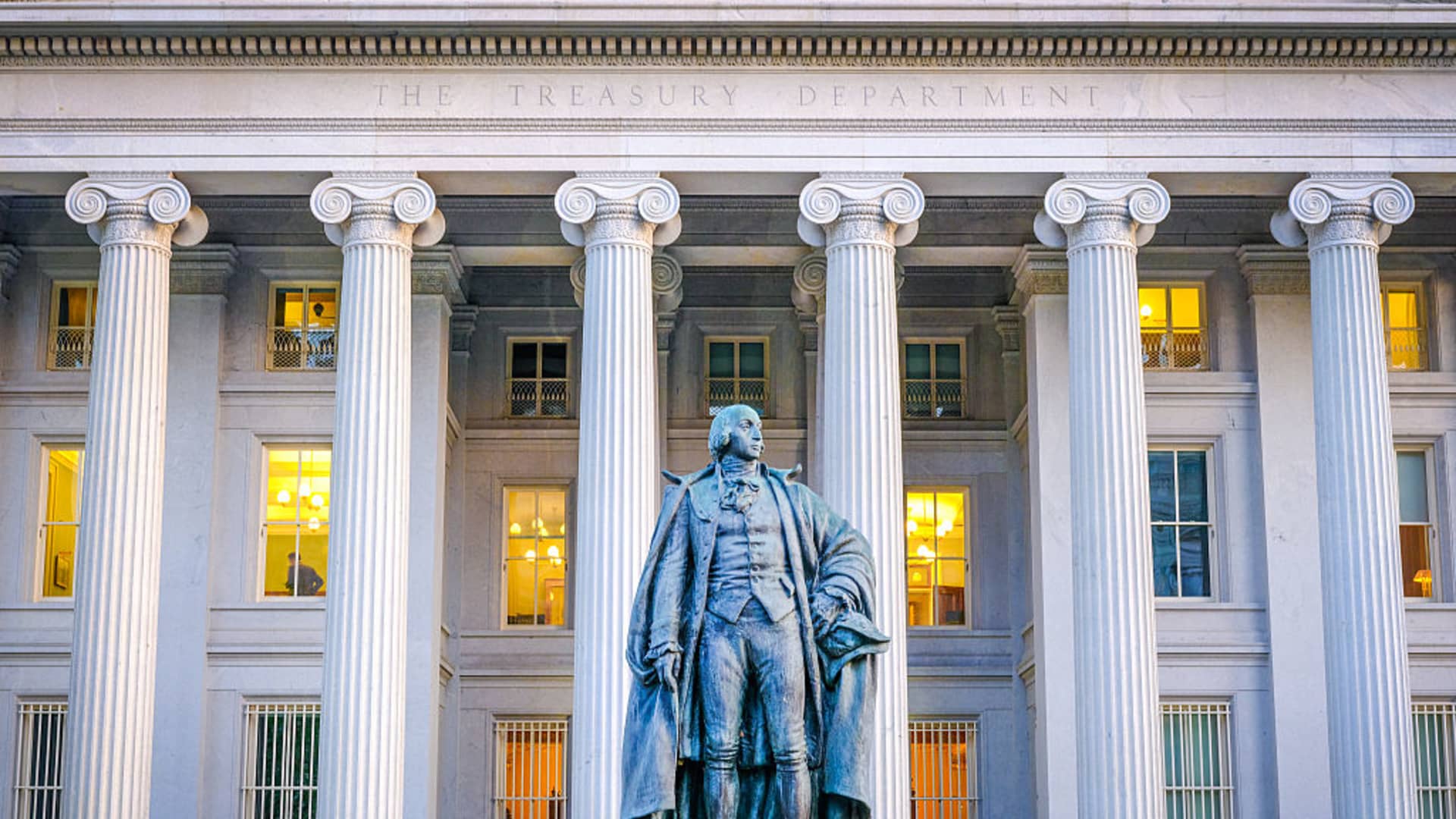The statue of former Treasury Secretary Albert Gallatin stands in front of the north wing of the U.S. Treasury Department headquarters building on April 24, 2025, in Washington, DC, U.S.
J. David Ake | Getty Images News | Getty Images
The U.S. budget deficit edged lower for 2025 as record-setting tariff collections helped offset what also were unprecedented numbers for payments on the spiraling national debt, the Treasury Department announced Thursday.
In a year marked by a bruising trade war and high financing costs, the federal government managed to escape with a $1.78 trillion shortfall, some $41 billion, or 2.2%, less than in fiscal 2024.
While that’s still on the high end historically, the red ink would have been still worse had it not been for a massive surge in customs duties and a September surplus of $198 billion that also set a record for the month.
President Donald Trump’s tariffs were a major contributor to tariff collections of $202 billion for the year, representing a 142% surge from 2024. September saw $30 billion in tariff payments, up 295% from the same period a year ago.
Treasury officials estimated Thursday that the dip in the budget shortfall will bring the ratio of deficit to gross domestic product to 5.9%. The measure has not been below 6% since 2022 and generally runs around the 3% area except in times of economic stress.
In an interview last week, Treasury Secretary Scott Bessent, noting Congressional Budget Office estimates that the deficit-to-GDP number would be below 6%, said “we’re on our way” to reducing the debt and deficit burden.
The impact from the deficit was felt in interest paid on the $38 trillion national debt.
Interest on the debt totaled more than $1.2 trillion, also a record and nearly $100 billion higher than the 2024 outlay.
Excluding interest that the Treasury earns on its investments, net interest payments totaled $970 billion, topping defense spending by $57 billion and behind only Social Security, Medicare and health care costs in the national budget.
Trump slapped controversial tariffs on U.S. imports earlier this year despite protests that they would spike inflation and hurt consumers, resulting in lower demand and a hit to economic growth.
While there have been signs of price increases in tariff-sensitive items, the moves have been mostly incremental. Federal Reserve officials say they likely will lower their benchmark interest rate further as they expect any price increases to be temporary. The current fed funds rate stands at 4.00% to 4.25%.
The government’s fiscal year ended in September, with the U.S. collecting $5.2 trillion in revenue over the prior 12 months while spending just over $7 trillion.





